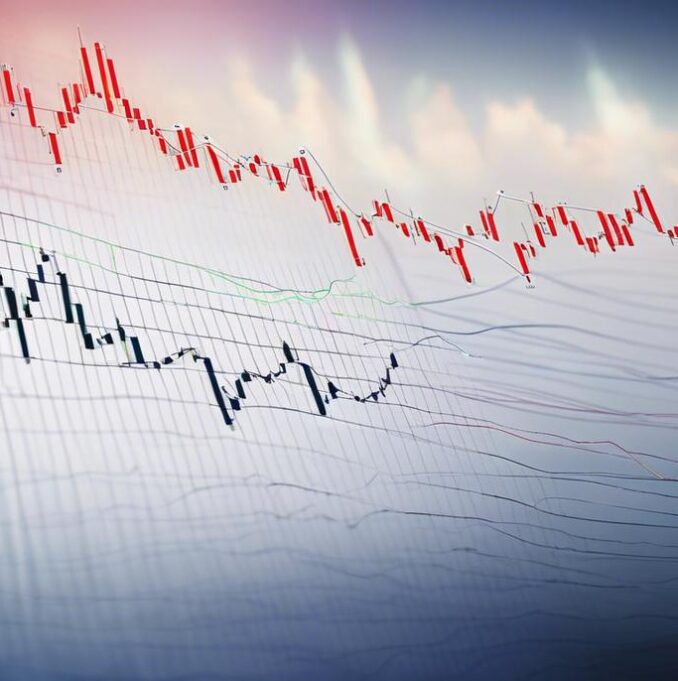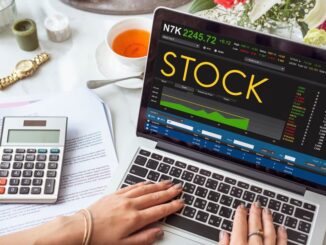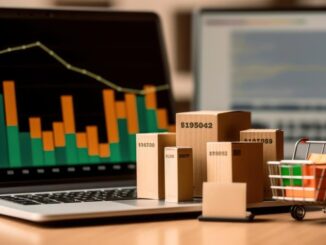
Understanding Stock Market Futures Guild Lines
As we step into the fast-paced world of finance, nothing seems to stir curiosity like stock market futures. Whether you’re an experienced investor or just starting out, understanding these steps of financial instruments can open up new avenues for diversifying your resources and hedging against risk. Understand the complexities and familiarize yourself with the basic structure of stock market futures, their distinctive mechanics, practical trading steps, crucial regulatory bodies, and the potential challenges and future perspectives. Embark on this enlightening journey that will offer you an insight into the enthralling world of futures trading.
Table of Contents
What Are Stock Market Futures?
Definition of Stock Market Futures
Stock market futures, or simply “futures,” are derivative financial contracts obligating the buyer to purchase an asset, in this case, a stock, or the seller to sell an asset, at a predetermined future date and price. They’re called futures because they involve an agreement today about a transaction that will take place in the future. In simple terms, a futures contract is like a bet between two parties about the future price of a stock.
Understanding Stock Market Futures
Futures contracts detail the quality and quantity of the underlying asset. As they are standardized to facilitate trading on a futures exchange, the assets involved in the contract are not exchanged, but rather the contract itself is traded. The buyer of a futures contract is taking on the obligation to buy and receive the underlying asset when the futures contract expires. The seller, on the other hand, is assuming the duty to provide and deliver the underlying asset at the expiration date.
Futures Market Role
The futures market plays a vital role in the global economy by allowing traders, investors, and companies to hedge risk and speculate on the future prices of commodities, stocks, and other assets. If a trader believes that the price of a stock or commodity will rise in the future, they can buy a futures contract and potentially profit from that price increase. Alternatively, if they believe the price will fall, they could sell a futures contract and possibly profit from a price decrease.
Difference Between Futures and Stocks
While futures are based on stocks and other assets, they are very different from owning the actual asset—let’s say, shares of a company for instance. When you buy a stock, you own a piece of the company and have the potential to receive dividends, vote on company matters and hold the stock indefinitely. On the other hand, a futures contract involves an obligation to buy or sell an asset at a specific price and a specific point in the future, meaning a futures contract has an expiration date.
Risk and Reward Profiles of Futures and Stocks
Both futures and stocks offer opportunities for profit but come with their own set of risks. In stocks, the risk is limited to the amount invested, but the potential gain is unlimited as the stock price can rise indefinitely over the long term. Futures, however, have theoretically unlimited risk because prices can move sharply in a short period. This is largely due to the use of leverage, where investors need only a small amount of money to control a large amount of the asset. Despite the high risk, futures can potentially offer significant returns if the market moves in favor of the futures contract.
The Role of Stock Market Futures in Market Predictions
The future landscape of the stock market may be influenced by investor sentiments observed in futures trading. For example, if futures prices for key stock indices, such as the S&P500 or Dow Jones, experience noteworthy growth during pre-market trading, it can often result in a strong positive opening for these indices when trading officially commences. This is due to the fact the futures markets start trading several hours prior to the stock market, offering a glimpse into potential stock performance.
The Mechanics of Stock Market Futures
Diving Deeper into Stock Market Futures
Stock market futures represent financial contracts that obligate the contract holder to either buy or sell an asset at a future date and price that’s already been agreed upon. In this context, the asset is a specified number of shares. Buyers who enter into such contracts agree to accept delivery from the seller, while sellers take on the commitment to provide the specified delivery.
Key Features of Stock Market Futures
Futures trading operates on a margin basis, where a margin is essentially a good-faith deposit that must be posted by both buyers and sellers to ensure their performance on the contract. Margins are set by the exchange and operate as a form of performance bond, or collateral, that helps ensure the integrity of the futures markets.
Leverage is another major aspect of futures trading. Leverage results from the use of margins, which allows a trader to control large amounts of the underlying share with a relatively small investment. This leverage can amplify gains but also magnify losses.
Futures contracts also come with an expiration date – the date until which the contract can be traded. Post-expiration, the contract ceases to exist. Hence, it is essential to close the position or roll it over before the expiration date.
Pricing Futures Contracts and Market Conditions
The pricing of futures contracts is a complex process that takes into account various factors, such as the current price of the underlying stock, risk-free return rate, the time left till contract expiration, and any dividends payable before expiration.
A significant concept related to the pricing of futures is contango and backwardation. These represent the market conditions that influence the future price of an asset. Contango occurs when prices for future delivery are higher than the spot price. This situation often results from carrying costs, such as storage or financing costs.
On the other hand, Backwardation is the market condition where the spot price is higher than the futures price. It can occur when the asset’s spot price is expected to drop, often due to an oversupply or low demand expectations.
Buying, Selling, and Settlement Practices
Buyers and sellers participate in futures trading through a futures exchange platform. When a contract is bought or sold, it is not settled immediately. It undergoes a “mark-to-market” process where the contracts are repriced at the end of each day to reflect the current value of the underlying instrument.
Futures contracts can be settled in two ways – physical delivery or cash settlement. Physical delivery necessitates the actual asset to be delivered on the agreed-upon delivery date, while cash settlement means the difference between the purchasing price and the price on the agreement day is settled in cash.
Understanding stock market futures may seem like a complex task. However, by equipping yourself with essential knowledge regarding its fundamental aspects, you can navigate its intricacies more effectively. Awareness about its opportunities and risks will help you make informed decisions that could potentially enhance your investment results.
How to Trade Stock Market Futures
Finding the Right Broker for Futures Trading
Your journey into futures trading begins with selecting a suitable broker. It’s imperative to choose a broker well-versed in futures trading to set yourself up for success. Look into their professional history, inquire about their charges and protocols, and ensure their provided services are in line with your investment goals and strategies.
Understanding Futures Contracts and Quotes
Understanding futures contracts and futures quotes is paramount in engaging in futures trading. A futures contract is essentially an agreement to buy or sell an asset at a predetermined price at a specific time in the future. Futures quotes, on the other hand, are a snapshot of the current price of a futures contract. They consist of the contract symbol, the last traded price, the changes from the previous trading day, open, high, and low prices for the day. Understanding these quotes will enable you to make informed decisions about the trades you wish to execute.
Key Tactics and Strategies in Futures Trading
Strategic decision-making leads to successful futures trading. Firstly, understanding market trends is vital. Traders use Technical analysis, a strategy that involves analyzing price movement patterns and market trends, to predict future movements in the market. Secondly, timing is crucial. Making trades at the right time can significantly affect profitability. Traders have to monitor the market actively and stay informed about global and industry-specific news. Another effective strategy is diversification, which helps to distribute risk across different types of investments.
Risk Management in Futures Trading
Managing risk in futures trading is an essential element in protecting your investment capital. Setting a stop-loss order is one such risk management strategy. This is an order placed with a broker to buy or sell once the stock reaches a certain price, which helps to limit potential losses. Another useful risk management strategy is position sizing—determining the number of units to buy or sell in a particular trade, based on the amount of money you are willing to risk.
Securing Your Investment
The risk factor entwined with futures trading can be managed using stop-loss orders, position sizing, and consistent acquisition of knowledge about market trends and significant economic influencers. Taking advantage of educational resources provided by your broker, third-party market analysis or seeking professional advice can significantly aid in understanding and interpreting market indicators accurately. Protecting your investment capital can also be bolstered by deploying hedging strategies. These strategies involve investments made to decrease the risk of unfavorable price shifts in an asset.
Regulation of Stock Market Futures
Decoding Stock Market Futures
Stock market futures constitute derivative contracts that commit the buyer to purchase, or the seller to dispose of, a particular stock at a designated price on a pre-set date. Their worth, like other derivatives, is dependent on an underlying asset – in this instance, stocks. Financial market participants leverage futures contracts as a strategic move to speculate on the direction of the market or specific securities without the necessity of owning the underlying asset.
Role of Commodity Futures Trading Commission
To ensure the integrity of these financial transactions, regulatory bodies such as the Commodities Futures Trading Commission (CFTC) are put in place. Established in 1974, the CFTC is an independent agency of the US federal government that regulates the commodity futures and options markets in the United States. The CFTC’s mandate includes the promotion of competitive and efficient futures markets, the protection of investors against manipulation, abusive trading practices, and fraud. They oversee the conduct of both intermediaries in the financial markets and the exchanges on which commodity futures are traded.
National Futures Association’s Contribution
Joining the CFTC in regulating these market operations, the National Futures Association (NFA) serves as the industrywide, self-regulating body for the U.S. futures industry. Unlike the CFTC, the NFA is a private-sector initiative, established in 1982. The NFA develops and enforces rules, provides member education, and administers mandatory arbitration to resolve futures-related disputes.
Importance of Regulation in Stock Market Futures
The existence and the watchful eye of the CFTC and NFA are vital in maintaining fair, transparent, and stable markets. They play a crucial role in preventing fraudulent practices and excessive speculations that could lead to market instability. By setting regulatory standards, they ensure the creditworthiness of transactions and financial integrity of the markets, leading to investor confidence – an essential element in thriving markets.
Compliance and Market Transparency
Both the CFTC and NFA work together to enforce regulations and standards among brokers, traders, and other services within the futures market. They conduct audits and provide oversight to confirm that registered entities comply with the essential requirements. These agencies also ensure transparency in markets by requiring the disclosure of meaningful information publicly. This aids investors in making informed decisions, thereby fostering a fair and competitive marketplace.
Continuous Regulatory Progress
The Commodity Futures Trading Commission (CFTC) and National Futures Association (NFA) have roles that continuously adapt to the changing landscape of financial markets. As innovative financial instruments and practices emerge, these bodies diligently update regulatory guidelines, clearly outlining the rights and responsibilities of each market participant. Their capability to adjust to market transformations allows for robust and efficient regulation of futures trading, guaranteeing its credibility.
Key Challenges and Future Predictions
The Role of Volatility in Futures Trading
In futures trading, volatility plays a pivotal role. It pertains to the speed at which the price of an underlying asset, here, a future, fluctuates following market prices. It provides a measure of a financial instrument’s price variation over time. Traders must be aware that heightened volatility translates to the asset price drastically changing in a brief time span in any direction, presenting the potential for vast profits, but also for considerable loss.
The Challenge of Margin Calls
A margin call can be one of the prominent pitfalls in futures trading. This scenario occurs when an investor borrows money from a broker to make investments. When an investment loses value, a margin call can happen, requiring the investor to input more cash into their trading account to reach the minimum required value. For traders unable to meet the margin requirement, the broker can liquidate the securities without notifying the trader, potentially leading to massive financial losses.
Risks Associated with High Leverage
Trading futures typically involves using leverage or borrowed capital to potentially increase the return on investment. While this can amplify profits, it also strengthens losses when trades do not go as planned. Significant leverage can lead to large losses, as well as gains. Thus, it’s crucial for investors to thoroughly understand the arrangements and potential risks when dealing with high leverage situations.
Expert Opinions and the Future of Futures Trading
Many experts believe that technological advances such as artificial intelligence and machine learning could lead to more efficient and secure futures trading. AI, for instance, could make it possible to analyze vast amounts of data quickly and accurately, identify trends that humans might miss, and make more educated predictions about the future performance of various assets.
However, some experts warn that these same innovations could also lead to new challenges. For instance, automated trading powered by AI could potentially lead to “flash crashes” or other unexpected market behaviors if not properly regulated or controlled.
Current Trends in Futures Trading
In recent years, there has been a shift towards electronic trading, which allows faster and more efficient execution of trades, expanded access to markets, and increased transparency. Other trends include the growing popularity of commodities as an asset class, the rise of retail futures trading, and increased regulations aimed at making futures markets more transparent and fair.
Therefore, It’s crucial for any prospective traders to thoroughly understand these potential pitfalls and remain informed about the latest trends and advancements in the futures trading sphere to navigate this complex market successfully. Future traders must have a strategic approach that carefully factors in these various risks and shifts.
Conclusion
Stock market futures may seem complex at first glance, but with diligent study, it becomes an accessible and potentially profitable aspect of finance. The world of futures trading is vast and operates in a relentlessly changing environment, poised on a delicate balance of risk and reward. Trading futures involves mastering a wide range of skills from understanding the basic mechanisms to learning risk management and adapting to regulatory dynamics. Though it comes with significant challenges, the substantial returns often compensate for the high-risk quotients. As we look forward to the future, it’s an assured fact that contentious as it can be, stock market futures will prove to be a dynamic and evolving facet of world finance, coercing us to adapt, learn and grow alongside i





Be the first to comment